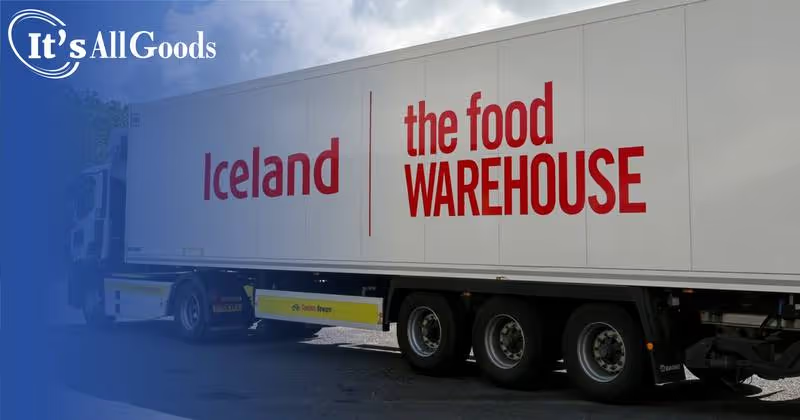

ood fraud affects 1% of the global food industry at a cost of $10 billion to as high as $40 billion per year, according to different estimates. This is just one of the many issues you need to be aware of during food transportation.
Transporting food is big business, but it is also fraught with many complications. It is important to keep certain food safety tips in mind when transporting food items across long distances.
Keep reading to find out what these best practices are, so you can stop food wastage and transport food across the country and the world without spoiling it.
To ensure that food products delivered are of high quality and safe, it all begins with the proper documentation. Not only should you check and double-check that all the documentation gets filled out accurately, but you also need to update it regularly to make sure that there's no confusion.
Some documentation to pay attention to are:
Each type of food shipped will have its own required documentation that you will need to stay on top of. And each country that the food is being shipped to will have its own rules about what documentation is mandatory. Mislabeled or error-filled documentation will delay your shipments. This can result in food spoilage and perhaps even contamination from other food shipments. Food brokers can help you with all this paperwork.
This is another important practice to pay attention to during food transport. It isn't as easy as refrigerating your items and believing that everything will be safe.
Every food item needs to get stored in properly sealed containers and at appropriate temperatures and conditions. Some temperature standards for food transport to keep in mind are as follows:
There are countless stories of foods and other items that were stored improperly and then had to be recalled because of salmonella or other dangerous bacteria that had developed within.
It's dangerous for consumers to intake these food products because even though they might look fine from the outside, they could be harboring dangerous bacteria that could cause dangerous ailments. According to the World Health Organization, foodborne illnesses can potentially lead to long-lasting disability and even death.
When transporting foods over long distances, there's always the imminent danger of contamination by pests. They will also spread diseases, so it's crucial to do what you can to protect your precious food cargo from pest infestation.
The journey of food from farm to fork is a testament to human ingenuity and the power of global cooperation.
One way you can do this is by regularly inspecting your storage containers to ensure pests haven't bitten through them to get at the food stored inside. Also, have a pest control plan in place, no matter if you have an infestation or not. It's better to be proactive in this regard than to wait until you have a pest infestation and then panic to place certain measures in place.
Whoever is involved in handling your food transport, be it workers, staff, shipping personnel, or any other food handlers, you will want to ensure all of them have the appropriate food safety training and food transport knowledge. Proper hygiene practices should be maintained every time food is handled, to prevent contamination.
For example, the staff should know that raw food should not touch ready-to-consume foods. And nonfood items shouldn't be loaded onto the same load as food items.
Cross-contact should also be prevented to avoid allergens and contamination. And also multiple transfers of goods can damage the food packaging and/or the food items themselves, so it should be reduced as much as possible.
Regular training should ensure that people don't get lazy about following food safety procedures. Put incentives in place so that your staff gets rewarded for following safety procedures.
Choose the most appropriate method for your food transport. This will be different for each kind of food that's getting transported.
Also, have sensors installed on your transport vehicle to ensure that the appropriate temperatures are maintained for frozen products.
Maintaining your vehicle properly is essential to ensure roadworthiness and prevent delays for perishable or other time-sensitive food products.
The transport staff needs to determine the food lifespan for each perishable item and then calculate the food miles to determine which transportation would be most appropriate.
Refrigerated vehicles are ideal for some food items, but depending on the season, they might be in shortage. This needs to be taken into account when setting up food transport.
What if the refrigeration system in the cargo ship or the vehicle breaks down? If there's no backup plan in place, all of that refrigerated perishable food will spoil in a matter of hours and your organization will lose hundreds of thousands of dollars in revenue.
Always start with a backup plan in place, even if there's no chance of it ever getting used.
This best practice is a given, but always needs emphasizing. Cleanliness of the transport vehicle is crucial, as are hygiene practices on the part of all staff handling the food during transport. From packaging to storage to delivery, every aspect of food transport needs to maintain high standards of sanitation. Regularly cleaning and disinfecting all surfaces and equipment should thus be part of the mandate of all staff.
A food broker like It's All Goods can help you circumnavigate the complicated world of food transportation and more. We will take care of it all for you from product line representation to in-store advertising to post-contract logistics. Contact us today to learn more about our services to help convenience store and food manufacturer managers like you.